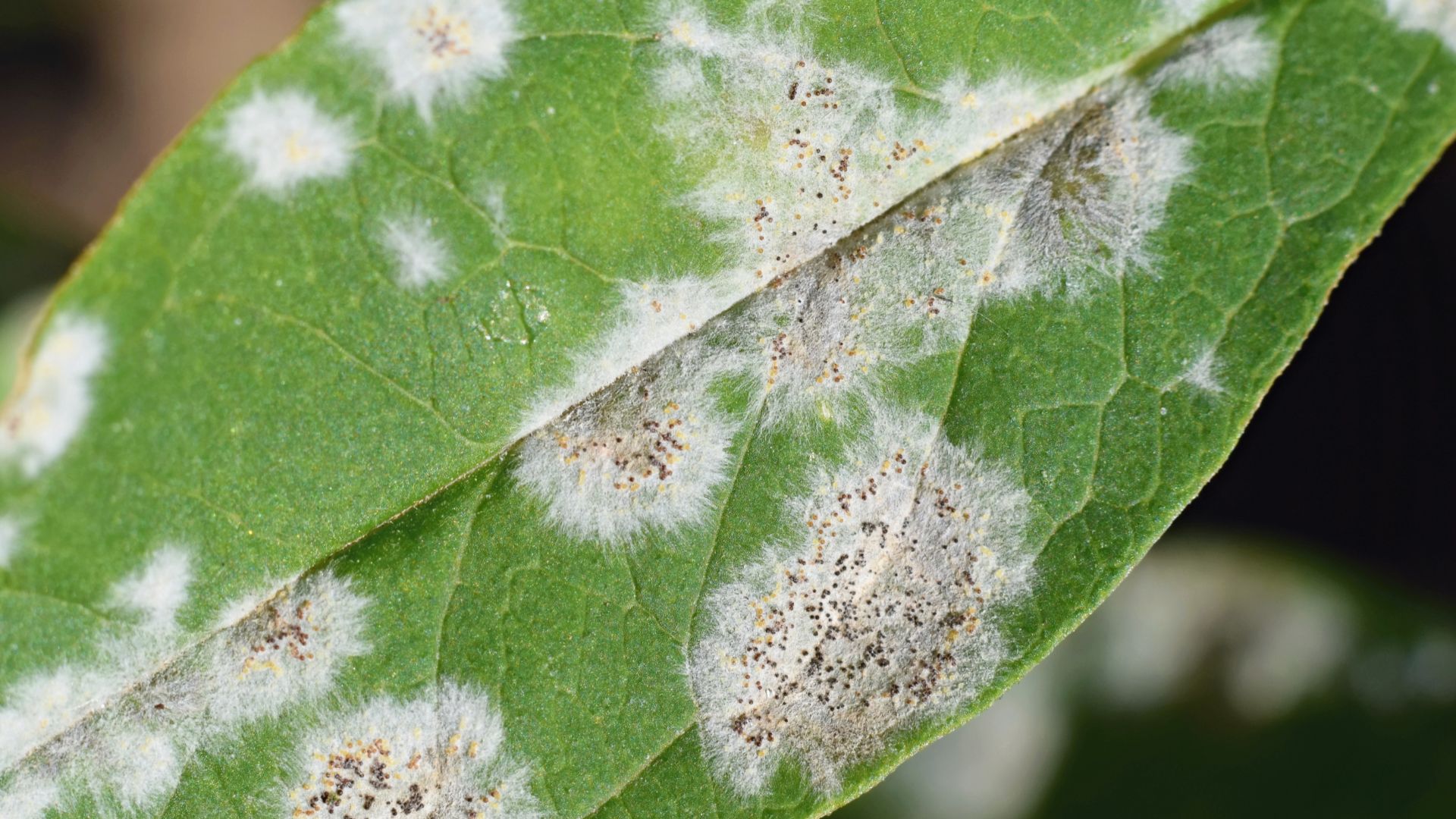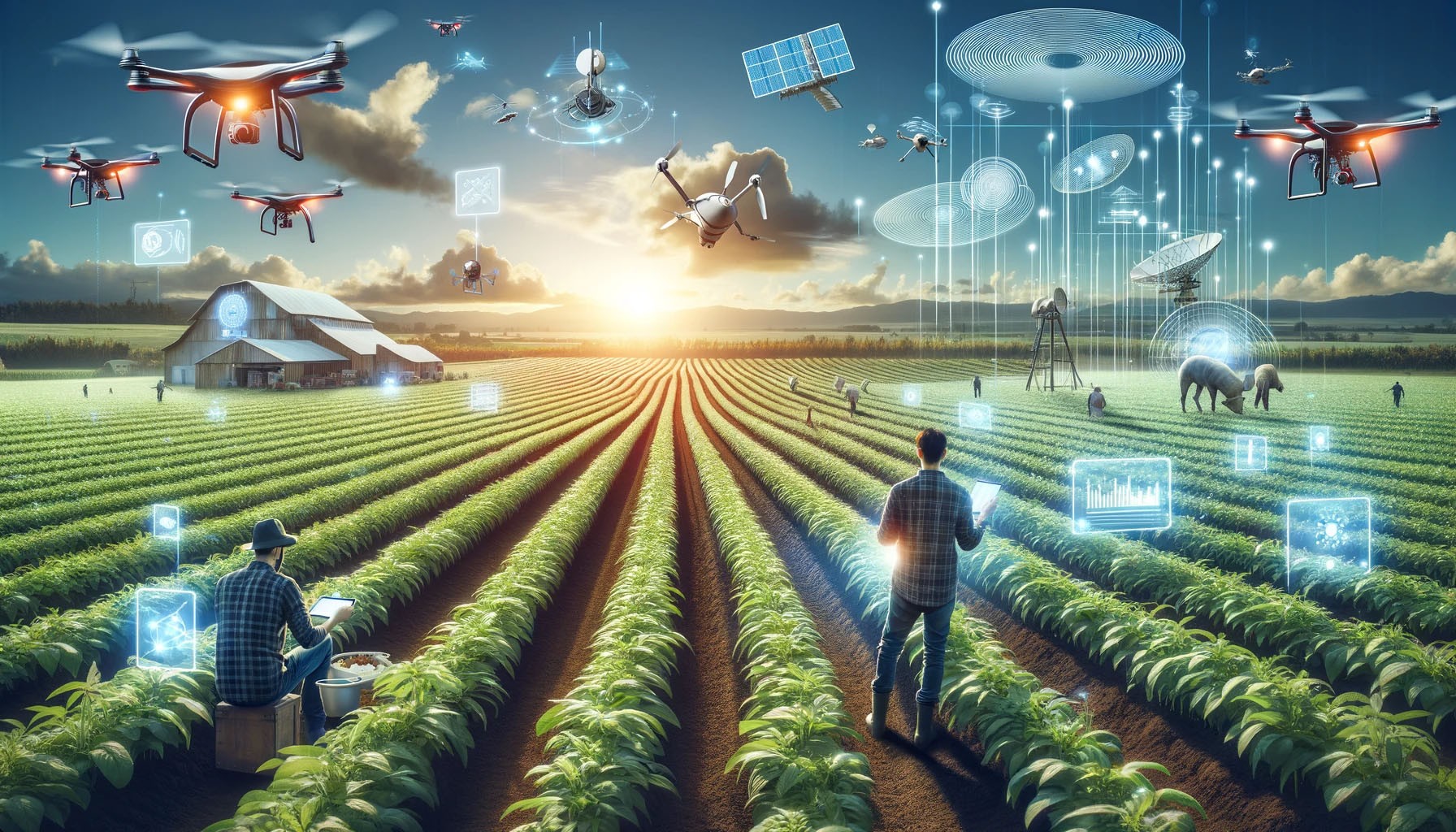Smart Plants are Coming to a Field Near You This Year
InnerPlant is revolutionizing agriculture with its engineered plants that emit fluorescent signals, which are detectable by satellites, enabling early detection and treatment of fungal infections in crops
Jan 2, 2024
AI Image Created Using DALL-E
Despite your painstaking efforts to pick perfect produce, you didn’t notice the tiny bit of mold growing on that one strawberry on your weekend grocery stock-up. By Friday, you’ve got a full-on fuzz fest on your hands.
Fungus spreads fast, even in your fridge. And your mushy strawberries were the lucky ones. Plenty of their neighbors died in the field, never to produce a fruit.

The Costly Impact of Fungal Diseases in Agriculture
Fungi are responsible for about 80% of plant diseases, resulting in $100-200 Billion in losses annually in the United States alone. What’s worse, some fungi produce toxins that are harmful to humans and livestock.
So, what’s a farmer to do? Fortunately, we have fungicides. Fields are treated with fungicides—yes, organic ones, too—when a fungal outbreak appears.
But spraying a field with fungicide once we see fungus is like giving an entire elementary school antibiotics because a few kindergarteners have pink eye. We know from experience that every one of those booger eaters is likely to end up with pink eye, but broad-scale antibiotics hardly seem like a good solution. What if we could know when a kid gets pink eye before he has any symptoms and treat him before he’s ever contagious?
A New Approach to Combat Fungal Infections
That is what InnerPlant does for farmers. “We make crops that can communicate,” said Shely Aronov, CEO and Co-Founder of InnerPlant. And they’re coming to a field near you next year.
InnerPlant is a synthetic biology startup that closed its first round of funding last year and just announced a few major partnerships.
Their technology sounds like Sci-Fi—they engineer plants that give off fluorescent signals detected by satellites, which communicate back down to farming equipment in the field that takes action to fight infections, all with limited human intervention. But their mission is delightfully organic: to eliminate broad application of chemicals.
“Our signals come up within two days of initial stress,” explained Aronov. “It takes three weeks until you can see any external symptoms.”
That means we can catch fungal infections early, before they spread, resulting in fewer and smaller chemical applications and 20-30% higher yield. Additionally, broad-spectrum use of fungicides—like antibiotics—can lead to resistance. So, using less fungicides means we can continue to rely on them longer.
The potential cost savings are huge. But what about the cost?
“Our ethos with farmers is ‘scalable, affordable, no changes to my operation’,” said Aronov, “because farmers are not in the business of changing everything they do, taking on more risk, and complicating their life.”
The Future of Farming

InnerPlant is targeting traits that 95% of farmers care about and that are actionable. For right now, that means fungal stress in soybeans.
Plants have a characteristic response to fungal stress. That is, very specific genes are turned on to try and fight the fungal infection. It’s that gene activation that gets translated into a fluorescent signal in the InnerPlant soybeans.
There are similarly specific pathways signaling insect, nitrogen, and drought stress. Those will come later, but they have to meet InnerPlant’s criteria of actionability.
“95% of soybeans in the US are rainfed [as opposed to irrigated], so drought signaling in soybean wouldn’t be that useful,” noted Aronov.
When they do expand into other traits, InnerPlant’s focus will still be commodity crops, like corn, soybean, and cotton, where their technology can have the most impact.
Another part of InnerPlants' commercial strategy that’s key to their success is partnerships. In order to meet their ‘no changes to operation’ ethos, the sensing plants have to integrate into a system of seed companies, equipment providers, and agrochemical companies that farmers already use. Instead of reinventing the wheel, InnerPlant is creating APIs to integrate its sense and response software into existing platforms.
But what about the cost of actually developing the sensing plants? These plants are transgenic – they contain fluorescent genes that don’t naturally occur in plants. The cost of getting a transgene into a crop and getting it approved by the USDA has been estimated at $136 million dollars. Approval alone has historically taken four years.
Regulatory Success and Future Horizons
How did InnerPlant do it so fast with only $16 million in Series A funding? A combination of innovation and lucky timing.

In 2020, the USDA passed the SECURE Act, which dramatically simplified the regulatory approval process for traits that have already been used in previously approved transgenic crops. This act was devised to “bring USDA’s plant biotechnology regulations into the 21st century” by shifting regulations from focusing on the process (how a plant is genetically modified) to the product (the modification itself).
Thanks to the SECURE Act, InnerPlant’s fungal-sensing soybeans were approved in just nine months. That’s because fluorescent traits had already been approved. They went through the regulatory process 20 years ago because seed companies have been using fluorescence as a marker for other traits they’ve integrated (like pest or herbicide resistance) since pretty much plant biotech day 1.
Overall, it took InnerPlant 62% less time and 86% less money to get their first biotech plant in the ground. In addition to the SECURE Act, Aronov attributes their extraordinary pace to a hyper-focus and a willingness to think differently.
“Seed companies have been doing this for 25-30 years,” Aronov said. “They pretty much stick to their processes, but they’re not very efficient.”
InnerPlant brought in an expert—Randall Shultz, the former head of genome editing at Monsanto and CTO at Arcadia—and designed the process from scratch, which led to huge gains in efficiencies since there have been many improvements in the way you can do genetic engineering in the last 30 years.
To be clear, they’re still relying on an age-old process for their genetic transformations. The agrobacterium method is so efficient in plants it would be over-engineering to use a more modern method like CRISPR-CAS9. But they custom designed a workflow that is purpose-built for efficiency considering their laser focus instead of using slower but more scalable processes typical at large seed companies.
The key to their success was focusing on a massive pain point, something farmers can’t live without, and then solving the problem seamlessly with whatever tools were the most efficient.
Now that the plant is field-ready, the next step is to test it. InnerPlant has teamed up with GrowMark, a massive agricultural co-op, to grow test plots near production soybean farms across the Midwest. If the experiment is successful, Aronov estimates the plants will be in commercial production in 2026.

I’ll repeat that again for emphasis: Smart plants are coming to a field near you in 2024. They will be in your grocery stores by 2026. The future is here, and it’s very green.


















